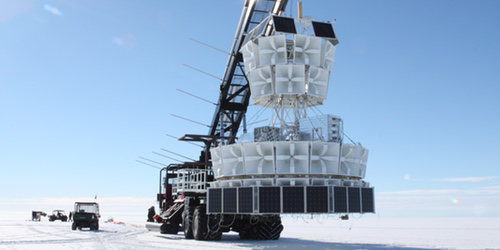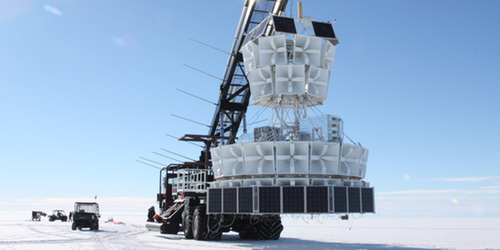ANITA Spots Another Inverted Cosmic-Ray-Like Event
High-energy cosmic-ray particles constantly bombard Earth. When one of these particles collides with molecules in our atmosphere, it triggers a cascade of secondary particles, collectively known as a cosmic-ray air shower. But that isn’t the only way high-energy particles interact with Earth. On 28 December 2006, the balloon-borne Antarctic Impulsive Transient Antenna (ANITA) detected an “upward” air shower—a fountain of high-energy particles erupting from Antarctica’s icy ground. The team now reports the observation of a second such event, which occurred on 12 December 2014.
ANITA was designed to detect cosmic-ray air showers via the radio-wave signals they emit. ANITA detects the radio waves either on their way down or, more frequently, on their way back up after bouncing off the ice. This bounce inverts the phase of the radio waves, allowing the two sets of waves to be distinguished by way of their direction and phase.
But in 2006 and 2014, ANITA detected an unexpected signal—radio waves coming from the ice with an uninverted phase. The detections suggest that the signals came from upward-moving particles that tunneled through Earth before erupting from the ice. But cosmic rays aren’t predicted to do that in large numbers, leaving the source of these signals a mystery. One possibility is that cosmic rays from a bright supernova blasted all the way through Earth—but only the 2014 detection was coincident with such an event. Another possibility is that ANITA detected radio waves emitted from a particle not accounted for in the standard model. The team says that further detections of these weird signals are needed before making any definitive conclusions on their origin.
This research is published in Physical Review Letters.
–Katherine Wright
Katherine Wright is a Senior Editor of Physics.





